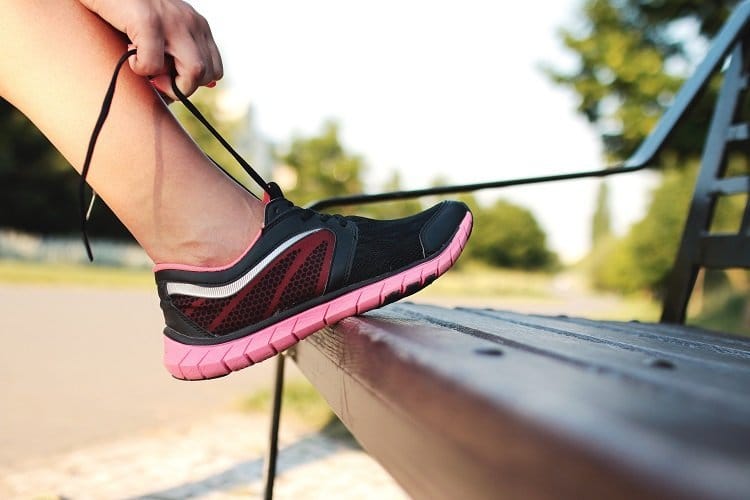Whether you’re a brand new runner or a seasoned pro, nobody is immune to shin splints.
Shin splints, which occur when the muscles surrounding the shin bone start to swell as a result of excessive force, typically aren’t serious, but they can be frustrating, especially if you’re in the process of training for a race.
If you start experiencing symptoms of shin splints (aching, tenderness, or swelling in the lower leg), be sure to give these five simple treatments a try so you can get back to running as soon as possible.
1. RICE

When you first notice pain or swelling that you think could be caused by shin splints, one of the best things you can do is apply the RICE (Rest, Ice, Compression, Elevation) method.
Often, taking 1-2 weeks off from running can help reduce the swelling and pain and allow you to run comfortably again.
During your time off, make sure you’re also spending lots of time applying ice packs, using compression bandages, and lying or sitting with your legs elevated to improve circulation.
You can also take over-the-counter anti-inflammatory drugs like ibuprofen to help with your pain and swelling. Just make sure not to rely on them too much — overusing them can make it hard for you to tell when your pain has actually gone away.
2. Foam Rolling
Foam rolling is another great and affordable treatment option for people dealing with shin splints. It helps reduce inflammation in the muscles reduce pain and pressure around the shin.
The best way to foam roll for relief from your shin splints is to take a basic foam roller (like the one you’d use on your back) and kneel on the floor with the roller under your chest. Pull your right in toward your chest and place the right shin on the foam roll. Then, use your left leg to control pressure as you roll up and down the shin. If you hit any tender spots, stop and spend some extra time working on them as you extend and flex your ankle.
You can also roll out your calf muscles to loosen them up — tight calf muscles can increase your chances of developing shin splints.
3. Cross Train

It can be frustrating for active individuals to have to take time off from their training while they let their shin splints heal. Remember, taking a break doesn’t mean you can’t exercise at all. You just need to spend some time doing something besides running.
Cross-train with other activities like cycling, swimming, resistance training, and yoga.
Resistance training is especially beneficial for runners because it helps them build muscles in the legs that, if left unattended to, can put excess strain on the shins. Yoga is also good for loosening up tight muscles and recovering from the wear and tear running causes.
4. Change Your Shoes and Socks

If they’re not supportive enough or are simply worn out, your running shoes could actually be causing your shin splints. To treat your current issue and prevent future ones from coming up, investing in better running shoes might be a good idea.
Go to a running specialty store and have a professional help you find a pair of shoes that support your feet well while you run. You may also want to invest in a pair of compression socks to help reduce and prevent swelling and inflammation.
5. Use Orthotics
Orthotics provide arch support to prevent and treat shin splints. Certain types can also help absorb shock and correct poor gait patterns that put too much pressure on your shins.
Go to a running specialty store to find orthotics that will help correct any specific issues that you have when it comes to your specific feet and gait. You can even have a pair custom-made for even better results.
Tips for Preventing Shin Splints
In addition to treating your shin splints, it’s also important to take steps to prevent them from happening in the future. In addition to changing your shoes and wearing orthotics, give these other tips a try:
-
Increase your calcium and vitamin D intake
-
Avoid increasing your mileage by more than 10 percent each week
-
Focus on strengthening the hips and core to improve foot strike
-
Shorten your stride to lessen the load on your shins when you run

